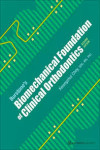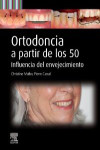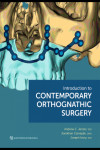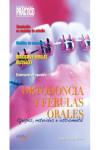NEW STRAIGHT WIRE. STRATEGIES AND MECHANICS FOR A PROGRAMMED APPROACH TO ORTHODONTIC TREATMENT
Pedetta, Francesco
Datos técnicos
- ISBN 9780867158243
- Año Edición 2020
- Páginas 160
- Encuadernación Rústica
- Idioma Inglés
Sinopsis
This textbook seeks to simplify orthodontic diagnosis, treatment planning, and therapy by introducing the New Straight Wire (NSW) method. Using simplified cephalometry and treatment mechanics, this technique uses a table to systematically calculate and plan the necessary tooth movements before treatment, following the same parameters for each and every patient regardless of malocclusion. With the NSW technique, the treatment plan starts small and then moves to a larger scale, first carefully assessing the dental arches and then moving outward and analyzing their position on the patient’s face. The treatment is therefore “verified” before beginning; the teeth can be placed in the planned positions to check that the resulting occlusion satisfies esthetic and functional goals for each individual patient. This approach rules out treatment plans that lead to good occlusion to the detriment of facial harmony. This book therefore teaches how to achieve Class I molar occlusion with proper overjet and facial esthetics every time, regardless of the pretreatment condition. It clarifies when surgery is indicated and when dental compensations and compromises may be made instead. While orthodontics has historically been a specialty based on action and reaction, this book seeks to shift orthodontics to a practice based on systematic movements planned from the start.
Índice
1. Introduction to the New Straight Wire
2. The Treatment Plan
3. Arch Lines
4. Dental Movements: Translation and Tipping
5. Orthodontic Forces and Gap Closure
6. Skeletal Growth
7. Discordance
8. Class I Malocclusion Correction
9. Class II Malocclusion Correction
10. Class III Malocclusion Correction
11. NSW Cephalometric Analysis
12. Example Treatment Plan
Otros libros que te pueden interesar
- ¿Quiénes somos?
- Gastos de envío
- Política de privacidad
- Políticas de devolución y anulación
- Condiciones Generales de contratación
- Contacto
2025 © Vuestros Libros Siglo XXI | Desarrollo Web Factor Ideas










